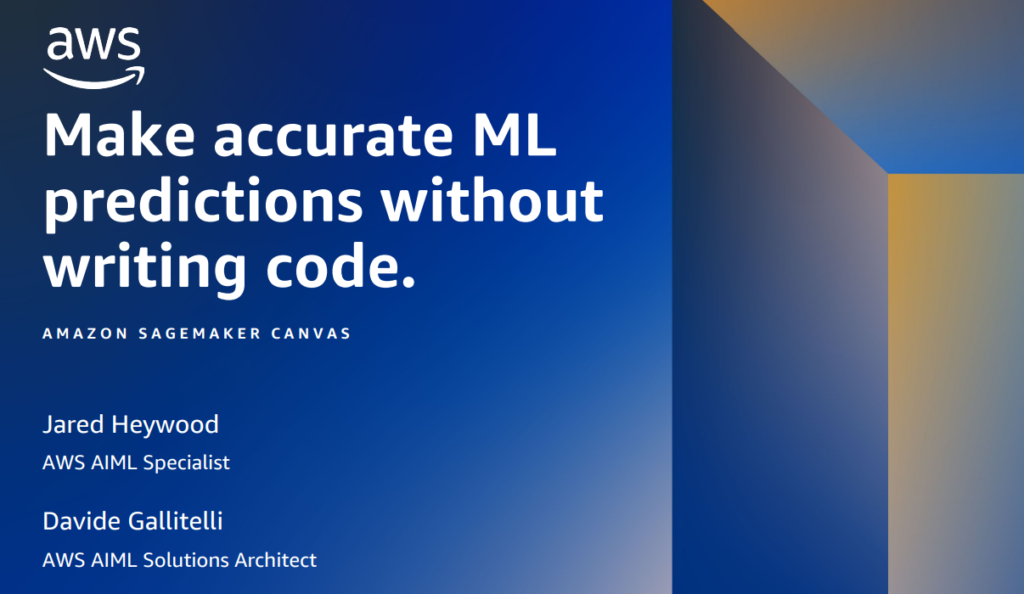
AWS: Anybody Can Now Create Machine Learning Models
Anybody working in the media and entertainment sector – or just about any other industry – can easily learn how to create machine learning (ML) models now, regardless of their background or skills, according to Amazon Web Services (AWS).
The company says it is changing the way ML is done by opening up ML access to business analysis.
And this can all be done without learning how to write code, Jared Heywood, senior ML GTM specialist at AWS, said Aug. 26, during the AWS Online Tech Talks webinar “Make accurate ML predictions without writing code.”
The company showed how to prepare data easily, train models and generate predictions using a point-and-click interface, as well as how to improve collaboration by sharing models and datasets with data scientists. It also explored common use cases, including churn prediction.
During the webinar, AWS also provided a demonstration of Amazon SageMaker Canvas, showing viewers how they can turn spreadsheets into predictions.
 Heywood has worked on the Amazon SageMaker team for the past two years, “building new features and helping customers get more value out of their data through machine learning,” he told viewers.
Heywood has worked on the Amazon SageMaker team for the past two years, “building new features and helping customers get more value out of their data through machine learning,” he told viewers.
Whether you’re a business owner, a developer or a student, you can now “get some insights [and] get some knowledge from machine learning models, without needing to have this background of science and math that usually people like data scientists” have and who were the ones who largely dealt with ML in the past, according to Davide Gallitelli, specialist solutions architect for artificial intelligence (AI)/ML at AWS.
“The idea is that everybody should be empowered with this tool and with this technology, and we try to achieve that in the simplest way possible,” said Gallitelli.
Heywood asked: “So if you have a spreadsheet with historical data [somebody] can predict or explain patterns that are happening?”
“Absolutely,” responded Gallitelli, explaining: “If you have any kind of historical data” from customers, “or really any information that you have in a spreadsheet and you have something like a target that you would like to predict – for example, sales into the future [or] if your customer is going to churn or not. Anything really. As long as you have enough information to feed to the algorithm to the machine learning model, then the machine learning model will actually learn from those patterns and try to drive predictions out of those patterns as well whenever they see new data.”
Although Gallitelli specifically pointed to sales and customer/subscriber churn use cases, he was quick to point out that there are pretty unlimited applications for the technology.
There are “so many different [potential] use cases and we work with so many different customers” across multiple industries, Gallitelli said, noting the healthcare industry is another sector that comes to mind where there are clear potential use cases.
And AWS keeps finding new use cases, according to Gallitelli, adding an organization can also use ML technology to forecast with a high level of accuracy if a marketing campaign will work or not.
He went on to provide a demonstration, building a new ML model with Heywood.
To view the entire webinar, click here.
